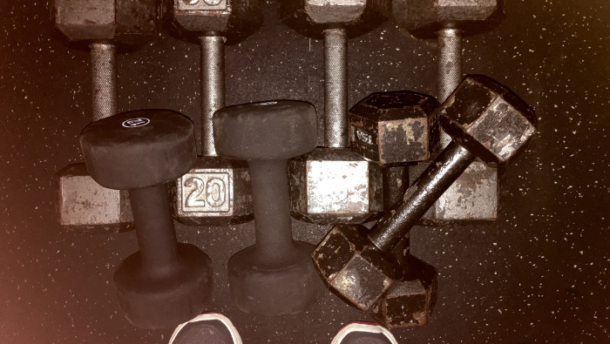Part 2 – Second Trimester Exercise Guidelines

A Little About Me
I am currently studying for my pre & post natal certification through an amazing company called Girls Gone Strong. My goal is to share as much as I can with my audience and help educate other moms who need some guidance. I’m excited to share part two of this three part blog series that will highlight the second trimester and some general considerations when exercising. If you are newly pregnant and haven’t read part one (guidelines in the first trimester), please refer to this blog post. Let’s get to it!
The 2nd Trimester
In general, the second trimester is when the morning sickness wears off and energy levels start to come back. It can also be a really exciting time as you start to tell your friends and family the big news! For me, it feels a bit more real in this trimester because I start showing more so my bloated food belly starts to actually look like a baby belly. Again, every woman is different and every pregnancy is different so this may not be the case for everyone. If you are still experiencing sickness and lack of energy, listening to your body will be crucial during this time.
As with the first trimester, your workout program will depend on your level of experience prior to pregnancy, how you feel throughout your pregnancy, and your goals. Most importantly, you will need to listen and work with your doctor to make sure you are cleared to workout and you are exercising within their guidelines and restrictions, if any. The below guidelines are not to substitute for medical advice but to share general guidelines from what I am learning and what the current research says. Please talk with your doctor before starting any workout program.

The Core & Pelvic Floor Connection
It’s still important to continue connecting your core & pelvic floor in this trimester. It’s beneficial for proper function of the pelvic floor during pregnancy, birth, and postpartum if you learn to strengthen and relax these muscles. As your belly grows, breathing may feel more challenging but it will still benefit you greatly by continuing to incorporate the connection breath (especially when it comes to preventing incontinence). Please see my previous blog post for details on what the connection breath is and how to perform it. If it’s more comfortable in this trimester, you can perform it seated instead of on your back, like in this video. I recommend incorporating the connection breath either before or after your workout, whichever you prefer. I usually perform 10 breaths in my warm-up and then 10 after my workout to wind down and relax.
Again, you will want to avoid holding your breath or bracing too hard during movements that are more challenging. Remind yourself to breath throughout each exercise, ideally inhaling when setting up the exercise and exhaling during the effort. For example, during a squat, inhale on the way down to relax your belly and pelvic floor and then exhale on the way up as you lift the pelvic floor.
A great resource to learn more about proper breathing during exercise is this article published by Girls Gone Strong. I highly recommend reading it and watching the short video to learn more.
Focus and Goals
The main goals during the 2nd trimester are to:
- Reduce back and pelvic pain
- Continuing to work on strengthening and relaxation of pelvic floor muscles (connection breath)
- Focus on good alignment and posture (that belly will want to pull you forward!)
- Maintain strength and cardio fitness (keep lifting weights & moving!)
Strength Training
There are some modifications to be made when strength training in this trimester. Even though energy levels may be up, there are so many changes going on internally that we need to take into consideration while exercising. As your belly grows and you progress in your pregnancy, you may be experiencing ligament pain in your lower abdomen from your growing uterus, an increase in breast size, lower back pain, and other changes. I really felt the ligament pain a few weeks into my second trimester when getting up from a chair or making sudden movements. During those times of growth, I tried to take it easy and move just a bit slower. This can be quite the challenge when chasing around a two year old but I tried my best!
Just like in the first trimester, if you need to get yourself in the mood and ready for a sweat, including a short cardiovascular warm-up before a workout is great! Adjust this to lower impact exercises since the weight on the pelvic floor is increasing. Three to five minutes of a light jog, high knee march, low impact jumping jacks (stepping legs out instead of jumping), etc. is perfect.
Effort, Sets, and Reps
Even though you may have more energy, it’s OK to feel like you have less stamina and can’t put as much effort into your strength exercises. Modify by going lighter with your weights and sticking with a higher rep range (2-3 sets of 12-15). You don’t want to overexert yourself, cause poor form, or hold your breath due to lifting a heavy load. It’s also good to note that you may want to reconsider any barbell exercises (if you normally do them) at this point because it may put too much pressure on your abdomen and pelvic floor.
I used a 10 point scale as a reference point for effort in part one of this series that is still applicable here. With 1 being little or no activity (watching tv) and 10 being maximal activity (impossible to keep going, can’t breathe). You will want to stay between a 4-7 on this scale, depending on your fitness level. You never want to get to the point where you can’t speak or feel completely exhausted. Again, our goal is to build and maintain strength, not to win the crossfit games!
A few additional considerations at this point in pregnancy are…
Diastasis Recti & Supine Position (Laying down on your back)
Diastasis Recti happens when the abdominal walls separate creating a gap in your midline. Almost all pregnant women develop this naturally in the third trimester and for some it goes away and heals postpartum while others continue to have a wide gap for weeks or months after giving birth. There is no clear way to tell who is most likely to develop a wide gap and unfortunately there aren’t any clear answers on how to avoid it.
From what I’m learning, one thing you can do is avoid any exercises during pregnancy that cause the abdominal wall to bulge along the midline (the linea alba). We don’t want to put any extra pressure or load on the already growing abdomen. You may start to notice this a bit more in the second half of the trimester as your belly gets bigger. Just feel and look for any signs of bulging or doming in the midline while performing an exercise. Some exercises that may cause this are planks, push-ups, and sit-ups. It’s recommended that you limit these exercises or take them out completely about midway through the second trimester (week 21). Especially if you feel a bulge! Another option (if you don’t feel or see bulging) is to perform them at an incline to decrease the pressure on your abdomen.
Let’s talk about the supine position (laying down on your back). At this stage of pregnancy, you really want to focus on how you are feeling when performing exercises in the supine position. There seems to be a lot of mixed recommendations and research on this topic as we learn more. Physicians have said in the past that the weight of the baby while laying on your back can press on or block a mother’s vena cava, which is the main vein that carries blood back to the heart from the lower body. It seems to be a bit confusing as to how much time spent in this position could cause this to happen so it’s best to monitor how you feel while laying down. If you experience any lightheadedness, nausea, or breathlessness when lying down, it’s best to take out those exercises completely or try modifying by laying at an incline of 15 degrees. Again, you may feel ok in this position at the beginning of the 2nd trimester but later in the trimester you want to check in and see if you experience any of these issues.
- For example, if you love glute bridges but experience these symptoms, try the incline position or switch to a bodyweight hip thrust to reap the same benefits.
Core Exercises
Modifications to core exercises will look different for everyone. Some women may not need to make adjustments until midway through the second trimester while others will earlier on. The biggest concern is placing excessive pressure on your midline that causes doming or bulging in your abdomen (as stated above). If this happens during exercises like planks, either drop to your knees or do them on an incline. If either of these still cause a doming effect, discontinue planks altogether. Don’t worry you will get back to them eventually! Exercises like v-ups, sit-ups, and crunches may also cause bulging (and could cause too much pressure in general) and/or dizziness and nausea since you are in a supine position. Eliminating these exercises may be beneficial. For me, if something could potentially have more harmful effects than benefits, I don’t see the point in doing them. Don’t forget, these modifications are only temporary! Some alternative core exercises you can perform are:
- Palloff Press
- Tall-kneeling band chop
- Side Plank
- Bird Dog (more so in the beginning of the 2nd trimester)
Rest and Recovery
As your energy levels increase, you may feel like you don’t need as much rest as you did in the first trimester. If you feel like this, great! Just listen to your body and decide what is right for you. I recommend taking about 30 seconds of rest in between exercises and 1-2 minutes in between sets.
Exercise Examples
When creating your strength workout, here are a few examples of good exercises to do in this trimester for the major muscle groups :
- Upper Body:
- One-Arm Dumbbell Row
- Close-Grip Lat Pulldown
- Dumbbell Bicep Curl
- Alternating Dumbbell Bicep Curl
- Incline Dumbbell Bench Press (better for some towards the end of the second trimester) OR Single-Arm Incline Dumbbell Bench Press, as shown in the video
- Dumbbell Overhead Press
- Glutes & Hips. Working that backside helps to keep the spine in a more neutral position (that growing belly wants to pull you forward), reduce irritation on your SI joints, and reduce unnecessary stress on your pelvic floor. Some glute exercises include:
- In the beginning of the second trimester (week 13-20), you can perform these exercises on your back (as long as you feel ok)
- Glute Bridges are one of my favorite glute exercises, see my Facebook post for how to perform them
- Glute Bridge March
- Single-Leg glute bridge
- Clamshells
- Switch to these exercises towards the second half of the 2nd trimester (week 21-28)
- In the beginning of the second trimester (week 13-20), you can perform these exercises on your back (as long as you feel ok)
- Legs. We need strong legs to hold up our growing bellies! For all of these exercises you have the OPTION to add weight but you don’t have to. This all depends on your current fitness level, think of the bodyweight version of the exercises as Level 1 and the weighted version as Level 2. You determine your level and get your sweat on. 🙂
Cardio
The physiological changes that are taking place in our bodies during this time can affect our aerobic capacity so it’s normal to feel out of breath quicker. You want to be able to talk while exercising and not be completely out of breath. You may start to notice higher-impact exercises (such as running or jumping) do not feel right to you anymore. At this point, it’s recommended to decrease or eliminate high-impact exercises like running, jumping rope, box jumps, or anything that can put too much pressure on your pelvic floor. For me, I felt heaviness and pressure when doing higher-impact cardio exercises around week 20 of my pregnancy so I took them out of my workouts.
As stated in part 1 of this series, steady-state, low-moderate intensity cardio is safe through pregnancy and is very beneficial. Choose something that keeps your heart rate between 120-140 beats per minute. Some options are incline treadmill walking, cycling, rowing, walking, etc. I’m a HUGE fan of walking, there is nothing like getting out for some fresh air (if you can but a treadmill works too) and doing a nice long walk while listening to your favorite podcast or music. Make it a goal to do this at least two times a week! Taking a short walk is also a great pick-me-up if you sit all day at a desk or hit that afternoon slump.
Bonus! A good aerobic base is linked to better quality sleep. Sleep should be a HUGE priority during pregnancy. I know it’s easier said than done but try to get in as much as you can. Your body will thank you!
Conclusion
I hope you find these guidelines helpful and you are able to incorporate some of the exercises into your next workout. Pregnancy can throw us in all sorts of directions so again (have I said it enough?), please listen to your body and do what feels right to you. Remember, this isn’t the time to max out on weight or push yourself to the fullest. It’s a time to take care of our bodies, build our strength, and keep our growing little baby healthy.
As always, please reach out with any questions & have fun sweating the stress!
*The key points in this post are from the amazing information I am learning in my Girls Gone Strong certification so I give them all the credit. If you are a trainer looking to specialize in pre & postnatal fitness, I highly recommend getting your certification through them!
*A quick legal disclaimer – When participating in any exercise or exercise program, there is the possibility of injury. If you engage in any of the exercises or workouts on my blog, you agree to do so at your own risk. Please see full disclaimer for more details.



Recent Comments